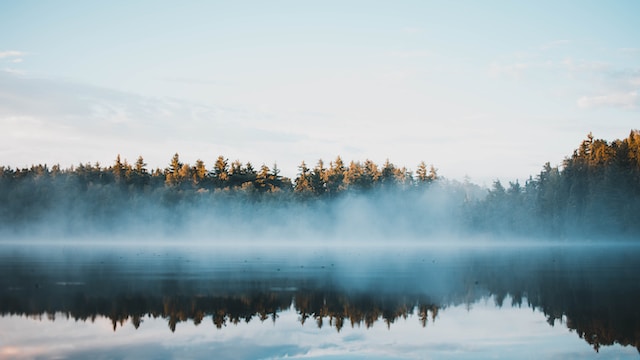Greater Napanee, ON – The Ontario government is investing $6 million to support 30 multi-year projects to help protect, conserve and restore the Great Lakes. These investments will help reduce plastic litter, excess nutrients and road salt entering lakes, rivers and streams, advance climate resiliency, and make significant progress on restoring environmentally degraded areas of the Great Lakes.
“Our government is continuing to work with partners to ensure Ontario’s Great Lakes are protected,” said David Piccini, Minister of the Environment, Conservation and Parks. “We’re very proud to be supporting projects that will improve water quality, reduce plastic and salt pollution and increase collaboration with farmers, Indigenous organizations and communities to help improve the Great Lakes.”
The projects are led by community groups, not-for profits, conservation authorities, universities and Indigenous organizations and communities across the province and support commitments in the Canada-Ontario Agreement on Great Lakes Water Quality and Ecosystem Health and Ontario’s Great Lakes Strategy.
Some of the organizations receiving funding include:
- Lower Trent Region Conservation Authority, which received $65,000 to work with area farmers to reduce excess nutrients from agricultural lands. Kaiser Lake Farms in Greater Napanee is one of the farms taking action on their land to help improve water quality and help restore the Bay of Quinte Area of Concern.
- Quinte Conservation Association, which received $162,791 to reduce nuisance algae and manage phosphorus in the Bay of Quinte Area of Concern. The project will also monitor and maintain the area’s water quality, fish and wildlife habitat while identifying emerging threats such as invasive species and climate change.
- St. Lawrence River Institute of Environmental Sciences, which received $402,187 for projects that will continue monitoring mercury in fish, sediment and industrial sites to make sure clean-up actions in the St. Lawrence River Area of Concern were effective and support the Mohawk Council of Akwesasne to study the health of Lake Sturgeon and Eel.
- Raisin Region Conservation Authority, which received $140,000 to develop and implement an agricultural land stewardship program and facilitate an outreach and education program to improve water quality within the St. Lawrence River Area of Concern.
- Governing Council of the University of Toronto, which received $610,416 to assess Great Lakes water quality (quantifying nutrients loadings, chlorides, microplastics discharges and tire compounds), evaluate drinking water treatment processes and assess practices that reduce excess nutrients and nutrient runoff from agricultural lands to the Great Lakes.
Great Lakes Program funding is also going to Chiefs of Ontario, Anishinabek Nation and Métis Nation of Ontario as well as 11 First Nations and Métis communities which will lead projects to support commitments in the latest Canada-Ontario Agreement on Great Lakes Water Quality and Ecosystem Health and Ontario’s Great Lakes Strategy.
Funding for the Great Lakes Program is part of the Ontario government’s $14 million in annual investments to further protect, conserve and restore the health of the Great Lakes and support the well-being of communities that rely on them.
“A resilient agriculture and food industry has a direct co-relation to the health of our Great Lakes. Today’s announcement is another positive step in advancing best practices that support the goals outlined in Ontario’s Great Lakes Strategy. We are taking a multi-ministry approach to positioning Ontario as ‘best in class’ when it comes to good stewardship and a healthy ecosystem associated with our Great Lakes.” – Lisa Thompson, Minister of Agriculture, Food and Rural Affairs
Quick Facts
- Ontario’s Great Lakes and St. Lawrence River shoreline is the longest freshwater coastline in the world measuring 10,000 kilometres, which is greater than the length of the Canada-U.S. border and almost equivalent to travelling one quarter of the way around the world.
- Ninety-nine per cent of Ontarians live in the Great Lakes Basin and 95 per cent of Ontario’s agricultural lands are in the Great Lakes Basin.
- Areas of Concern are geographic locations in the Great Lakes identified in the mid-1980s because human activities had severely degraded water quality and ecosystem health in those specific areas.
- Working with the Great Lakes community partners, our government is making progress on actions included in Ontario’s Great Lakes Strategy, such as:
- restoring 14 historically Areas of Concern around the Great Lakes
- restoring and enhancing over 7,200 acres of wetlands across Ontario through 330 projects and $20 million in funding under the Wetlands Conservation Partner Program
- expanding the Great Lakes Waterfront Trail so it now stretches over 3,600 kilometers and connects 155 communities, villages and First Nations communities
- Since 2018, the Ontario government has invested $66.5 million in 552 projects to safeguard the Great Lakes. During that time, 31 environmental clean-up actions have taken place across 17 Areas of Concern in the Great Lakes.









